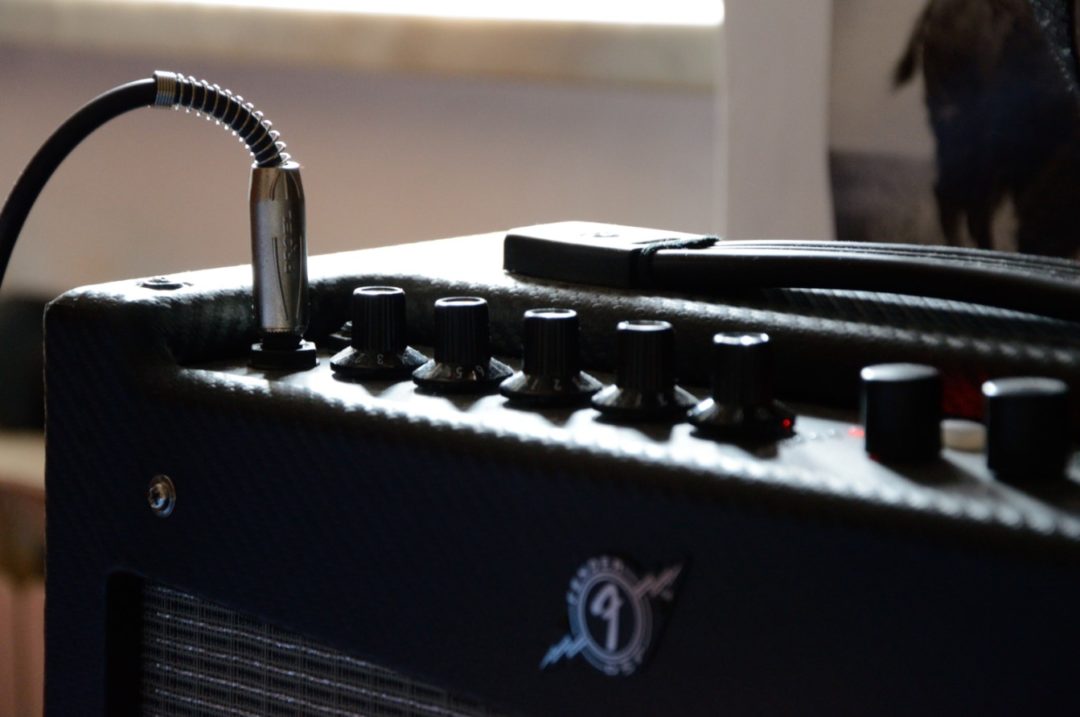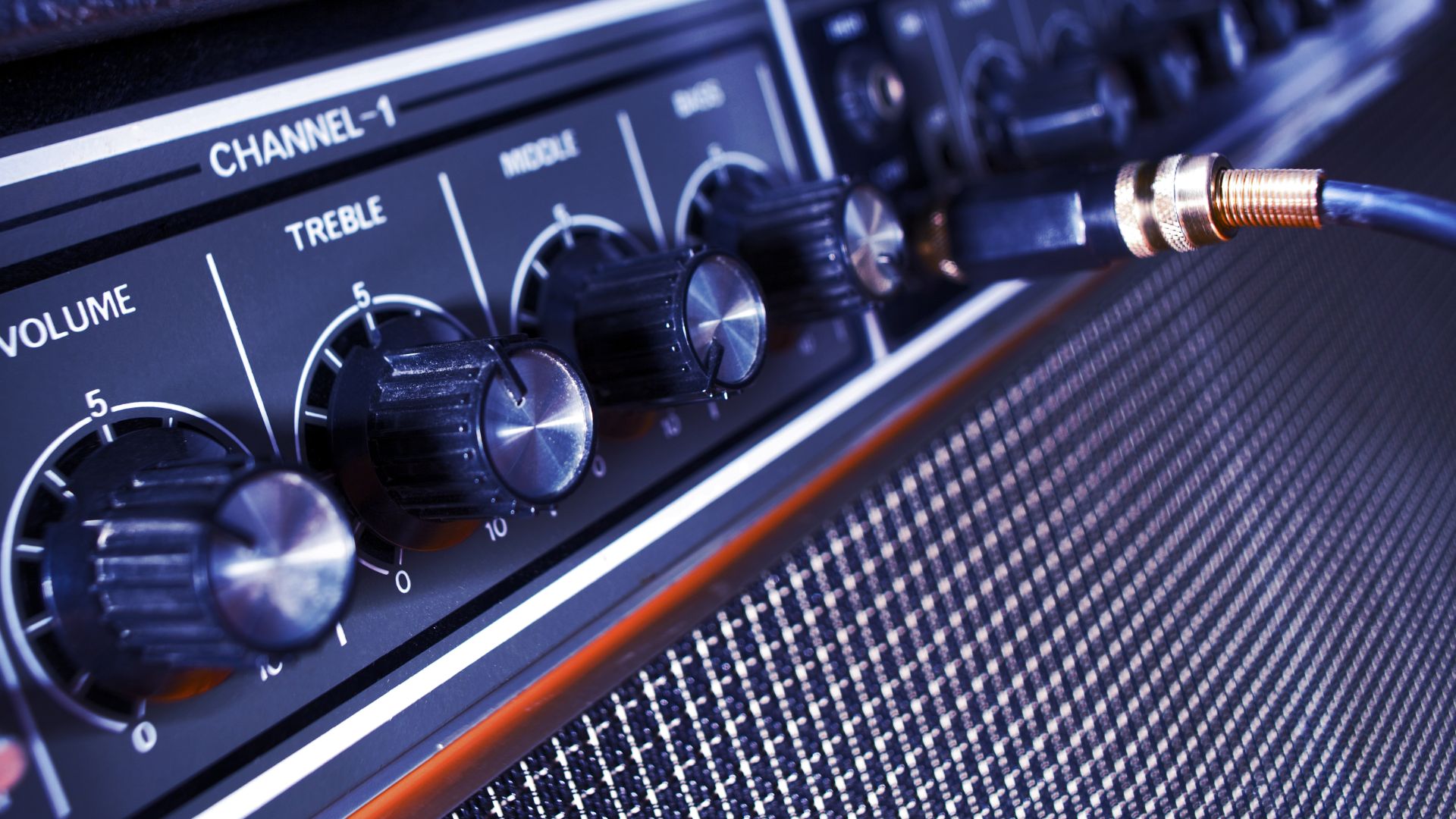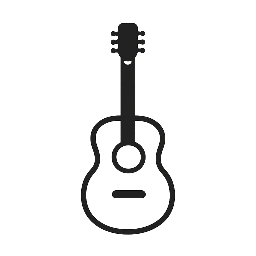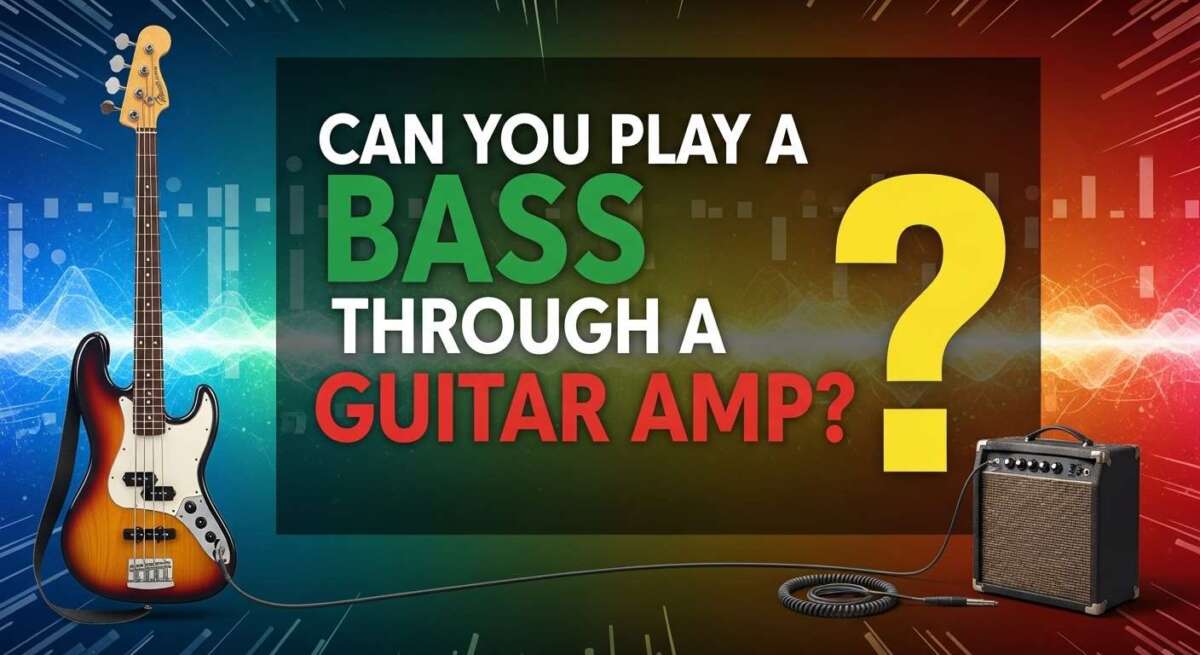Have you ever wondered if you can plug your bass guitar into a guitar amp? It’s a common question for many musicians who might not have a dedicated bass amp on hand.
The idea sounds simple—just connect your bass to the guitar amp and play, right? But is it really that easy? Using a guitar amp for your bass might seem like a quick fix, but there are important things you need to know to protect your gear and get the best sound possible.
You’ll discover what happens when you run a bass through a guitar amp, why it’s usually not recommended, and how you can do it safely if you must. Keep reading to avoid costly mistakes and keep your music sounding great.
Bass And Guitar Amp Differences
Bass amps and guitar amps look similar but serve different roles. They handle sound in unique ways to match their instruments. Understanding these differences helps you decide if you can play bass through a guitar amp.
These amps differ in speaker design, frequency range, sound quality, and risk of damage. Each factor affects how well your bass will sound and how safe your equipment remains.
Speaker Design And Frequency Range
Bass amps have larger speakers. They handle low frequencies better than guitar amps. Guitar amp speakers focus on mid and high frequencies. Bass notes demand more power and deeper sound.
Using a guitar amp for bass means the speakers may struggle to produce low tones. This can cause weak or muddy sound. Bass amps cover a wider frequency range to keep sound clear and strong.
Sound Quality And Tone Impact
Guitar amps shape tone for electric guitars with brightness and crunch. Bass amps keep the low end tight and punchy. Playing bass through a guitar amp can lose the bass’s depth.
The tone may become thin or distorted. Guitar amps can add unwanted distortion at low frequencies. This affects how your bass sounds and can reduce overall sound quality.
Risk Of Speaker Damage
Guitar amp speakers are not made for strong bass vibrations. Playing bass loudly can stress the speaker cones. This may cause speaker damage or failure over time.
Distortion and clipping can happen if the amp is pushed too hard. Bass amps are built to handle higher power and low frequencies safely. Using a guitar amp for bass involves risk to your gear.

Credit: www.youtube.com
Using A Guitar Amp For Bass
Using a guitar amp for bass is possible but comes with limits. Guitar amps are built for higher frequencies. Bass guitars produce low frequencies that can strain guitar amp speakers. Playing bass through a guitar amp needs care to protect the equipment and get decent sound quality.
Adjusting settings carefully helps prevent damage and keeps the tone clear. Guitar amps may lack the power and speaker design needed for bass frequencies. Still, with proper control, you can achieve a usable sound for practice or small gigs.
Volume And Gain Settings
Keep volume and gain levels low to protect the amp. High volume pushes the speakers beyond their limits. This can cause distortion or even permanent damage. Start with the volume at a minimum, then slowly raise it. Stop if the sound becomes muddy or distorted. Gain controls the signal strength. Too much gain causes unwanted noise and harsh sound. Use just enough gain for a clean tone.
Avoiding Distortion
Distortion occurs when the amp or speakers are overloaded. Bass frequencies need more power to sound clear. Guitar amps can distort easily with low notes. Listen for any crackling or fuzziness. If distortion appears, lower the volume or gain immediately. Avoid boosting bass or low-mid frequencies on the amp’s EQ. These can push the speakers harder. Gentle EQ settings help keep the sound clean and safe.
Signal Control With Pedals
Use pedals to manage your bass signal before it reaches the amp. A compressor pedal smooths out volume spikes and protects the amp. It keeps your sound balanced and controlled. A DI box can convert your signal for better clarity. Overdrive or distortion pedals designed for bass can add grit without stressing the amp. Experiment with pedals to find tones that work well with a guitar amp. Proper signal control improves sound and keeps your gear safe.
Tools To Improve Bass Tone
Improving bass tone through a guitar amp requires more than just plugging in. The right tools help shape and protect your sound. They manage dynamics, boost signal quality, and add clarity. Using these tools, you can get a fuller and richer bass tone even from a guitar amp.
Compressor Pedals
Compressor pedals smooth out the volume of your bass signal. They reduce sudden peaks and boost softer notes. This helps your sound stay balanced and clear. Compressors also protect the amp by preventing harsh spikes. They make playing through a guitar amp safer and more consistent.
Direct Injection (di) Boxes
DI boxes convert your bass signal to a cleaner, balanced output. They reduce noise and signal loss over long cables. A DI box lets you connect directly to a sound system or recording device. This tool improves clarity and punch in your bass tone. It also preserves low frequencies better than a direct guitar amp connection.
Preamp Benefits
Preamp units boost your bass signal before it hits the amp. They add warmth and control over your tone. A preamp can shape your sound with EQ and gain settings. It helps to compensate for the weaknesses of a guitar amp’s speaker. Using a preamp results in a fuller, more professional bass sound.
Situations Where It Works
Playing a bass through a guitar amp is not ideal, but it can work in certain situations. The key is to understand when it fits and how to avoid damage. Guitar amps are built for higher frequencies and smaller speakers. Bass guitars produce low frequencies that can strain these speakers. Yet, some scenarios allow for acceptable sound and safe use.
Knowing these situations helps you get the most from your gear without harm. Below are cases where a guitar amp can handle a bass guitar well enough for practice or creative tone shaping.
Low-volume Practice
Using a guitar amp for bass practice at low volume is common. Keeping the volume low reduces speaker strain. It also lowers the risk of distortion and damage. This setup works well for home practice or quiet sessions. The sound is not perfect but usable for learning and warm-up.
Unique Distorted Bass Tones
Guitar amps can create interesting distorted bass sounds. The smaller speakers and amp circuitry add character. Some bass players want this gritty tone for rock or experimental music. The amp’s natural breakup gives a raw, edgy sound. Use this method carefully to avoid speaker damage from high bass levels.
Using Vintage Or Scooped Amps
Vintage or scooped guitar amps with a midrange cut can suit bass tones. They emphasize bass and treble frequencies, giving a punchy sound. Some players prefer this for certain styles like funk or blues. These amps often handle low frequencies better than modern high-gain amps. Still, keep volume moderate to protect the speakers.
Potential Issues To Watch
Playing a bass through a guitar amp might seem convenient. Many players try it out of necessity or curiosity. Yet, there are important issues to consider. These problems affect sound quality and equipment safety. Understanding these helps protect your gear and improve your tone.
Speaker Overload
Guitar amp speakers are made for high frequencies. Bass guitars produce low, powerful sounds. These low frequencies can push guitar speakers too hard. Overloading causes distortion and speaker damage. The speaker cone might tear or weaken. This damage can be permanent and costly to fix. Keeping volume low can reduce overload risk but does not eliminate it.
Sound Compromise
Using a guitar amp with a bass changes the sound. Guitar amps cannot reproduce deep bass tones well. The sound may become thin or muddy. You lose the full, rich bass character. The amp may also distort bass notes at moderate volumes. This limits your ability to play with clarity and presence. For better sound, a bass amp or specialized speaker is ideal.
Amp Longevity Concerns
Running bass signals through a guitar amp stresses the amplifier. The amp works harder to handle low frequencies. This extra strain can cause internal parts to wear out faster. Transformers, tubes, or transistors may fail prematurely. Regular use with bass can shorten the amp’s life span. Using the amp as intended preserves its durability and performance.

Credit: nashville.mi.edu
Alternatives To Guitar Amps
Using a guitar amp for a bass guitar is possible but not ideal. Guitar amps often lack the power and speaker design to handle low bass frequencies well. Over time, this can damage the amp or result in poor sound quality. Musicians looking for better sound and safety should explore other options designed for bass instruments. These alternatives provide clearer tones and protect your equipment.
Dedicated Bass Amps
Dedicated bass amps are built specifically for bass guitars. They have larger speakers and stronger power handling to manage low frequencies. These amps deliver a full, rich bass tone without distortion. Many models also include built-in equalizers to shape your sound. Using a bass amp ensures better performance and protects your gear from damage.
Amp Modeling And Simulators
Amp modeling devices and simulators mimic the sound of various amps. They offer versatility in tone without the need for multiple physical amps. Some modeling units connect directly to headphones or PA systems, making them great for practice and recording. They provide a clean bass sound and can save space and money.
Pa System Integration
Connecting a bass guitar to a PA system is another effective option. Using a direct input (DI) box, you can send your bass signal straight to the PA mixer. This setup offers clear sound and powerful amplification. It is common in live performances and studio settings. PA systems handle bass frequencies well and offer flexible control over volume and tone.

Credit: blog.deplike.com
Frequently Asked Questions
What Happens When You Plug A Bass In A Guitar Amp?
Plugging a bass into a guitar amp risks speaker damage due to low frequencies. The sound may be weak or distorted. Keep volume low and avoid distortion to protect the amp. Using a compressor pedal helps control the signal for safer play.
Can You Turn A Guitar Amp Into A Bass Amp?
You can use a guitar amp for bass, but it risks speaker damage and poor sound quality. Keep volume low and avoid distortion. Use a compressor pedal and DI box for safer, better results. Guitar amps aren’t designed for bass’s low frequencies, so this setup is not ideal.
What Amp Is Safe To Play Bass On?
A safe bass amp typically delivers 100-300 watts with a speaker size of 10-15 inches. Avoid guitar amps, as they risk damage from low frequencies. Keep volume low, use a compressor, and avoid distortion to protect equipment and ensure clear bass sound.
Do You Need A Special Amp For Bass Guitars?
Yes, bass guitars need special amps designed for low frequencies. Guitar amps can’t handle bass tones well and may get damaged. Using a bass amp ensures clear sound and protects your equipment. Keep volume low if using a guitar amp to avoid speaker damage.
Conclusion
Playing bass through a guitar amp is possible but not ideal. Guitar amps struggle with low bass frequencies and may distort sound. Keeping volume low helps protect the amp and speakers. Using additional gear like compressors can improve tone and safety.
For regular bass playing, a bass amp fits better. This ensures clearer sound and longer equipment life. Choose gear that suits your instrument for the best results.

Senior Music Reviewer
Alex Carter is a seasoned music reviewer with over a decade of experience in the world of sound and instruments. Passionate about helping musicians and enthusiasts make informed choices, he brings sharp insights and in-depth knowledge to every review. From classical instruments to modern gear, Alex combines technical expertise with a love for music to deliver content that resonates with readers.
As a Senior Music Reviewer and expert author on Tuneluma.com, Alex is dedicated to sharing honest evaluations, practical advice, and thoughtful commentary to guide readers in their musical journey.


Leave a Reply